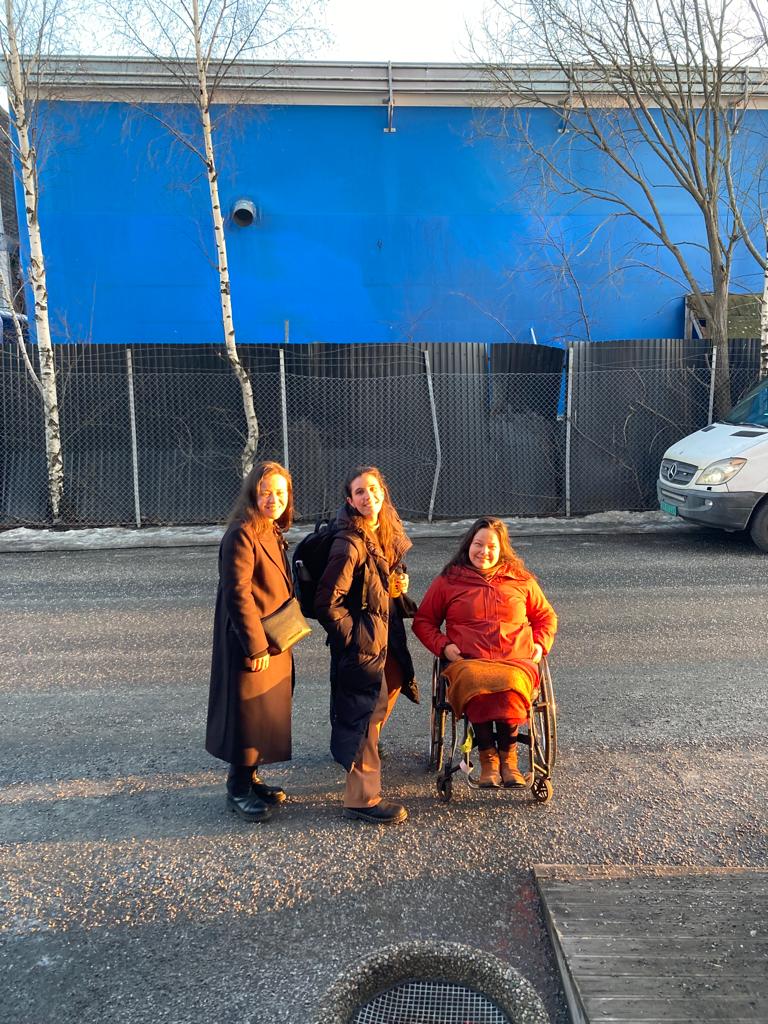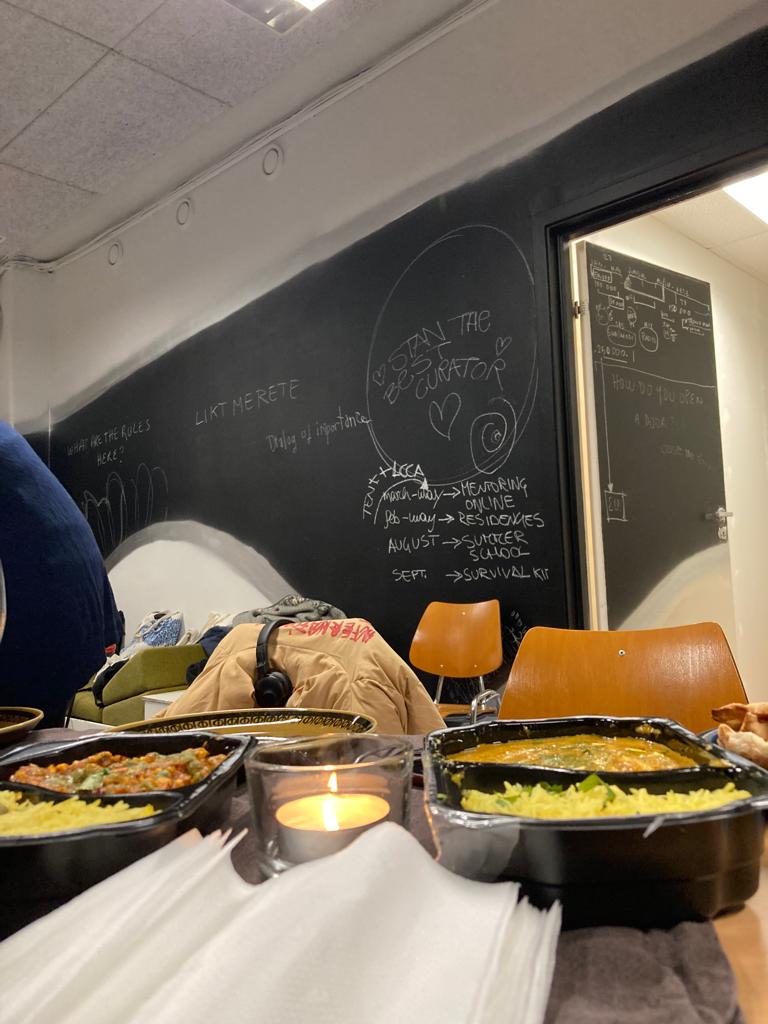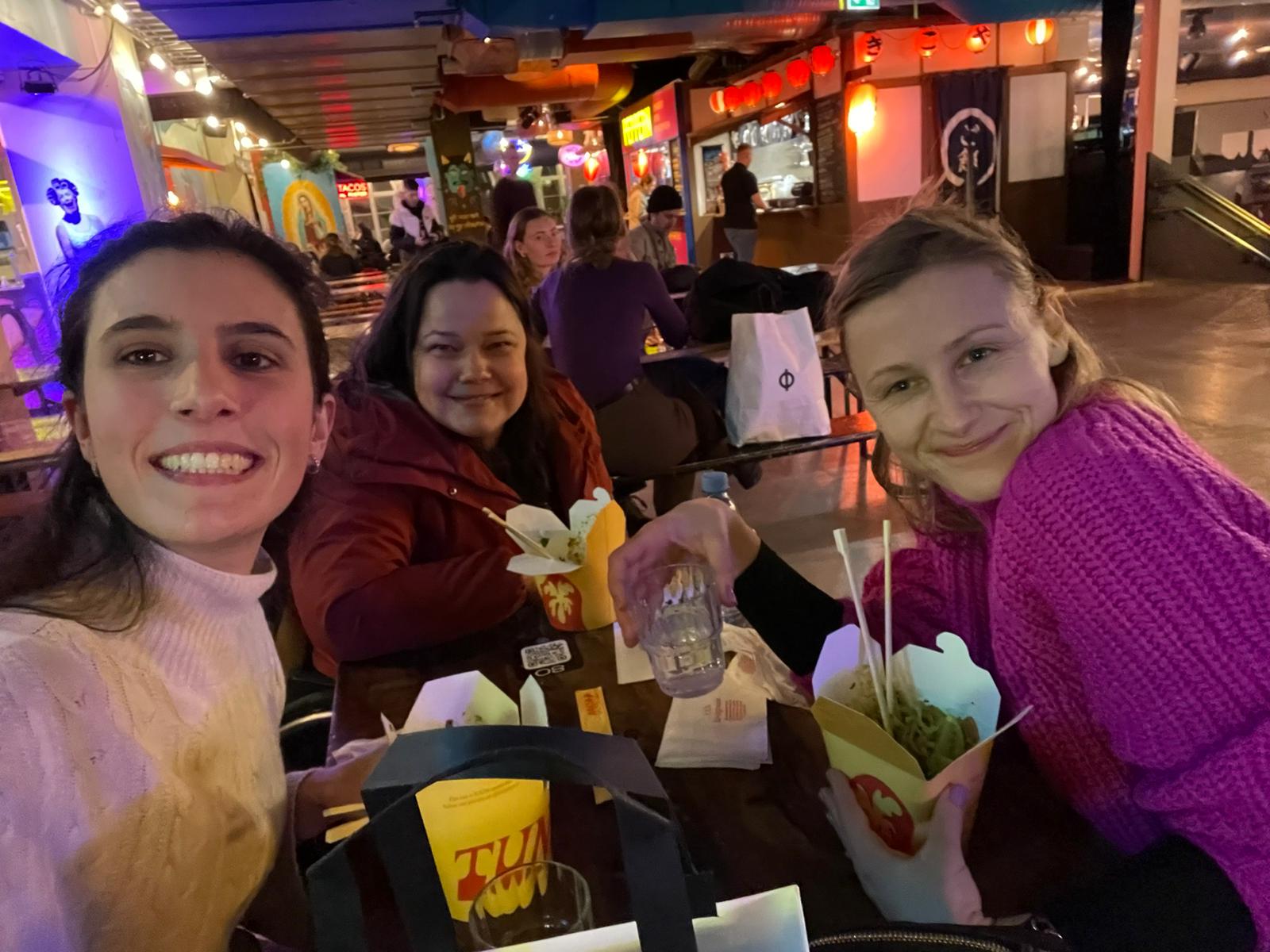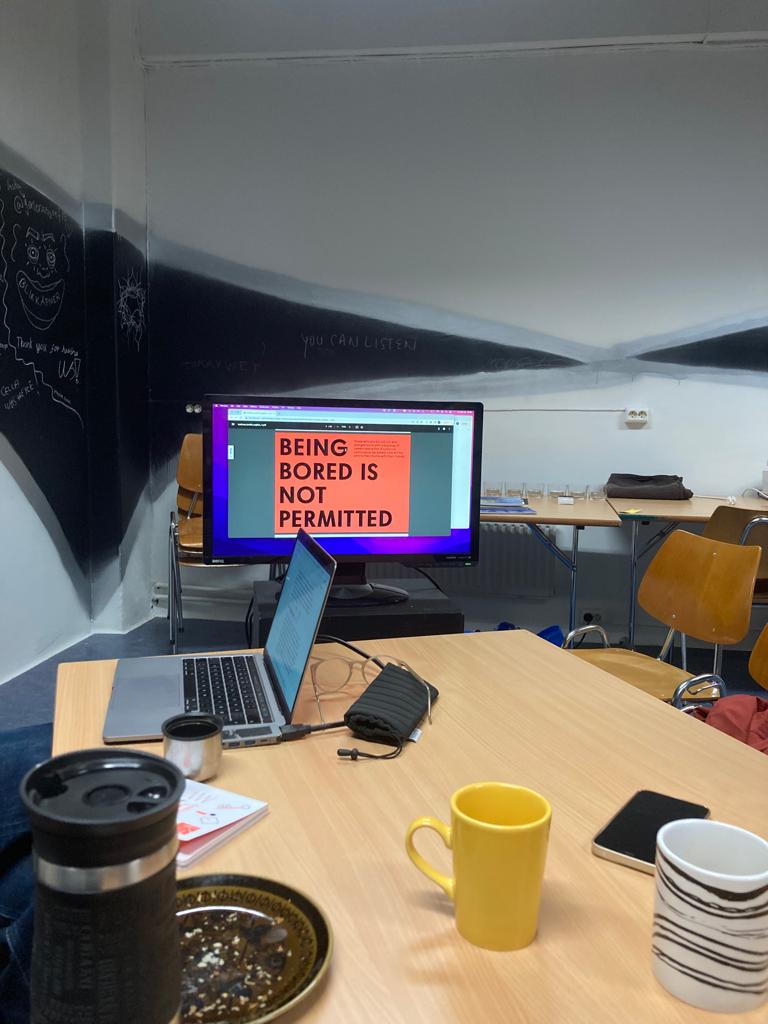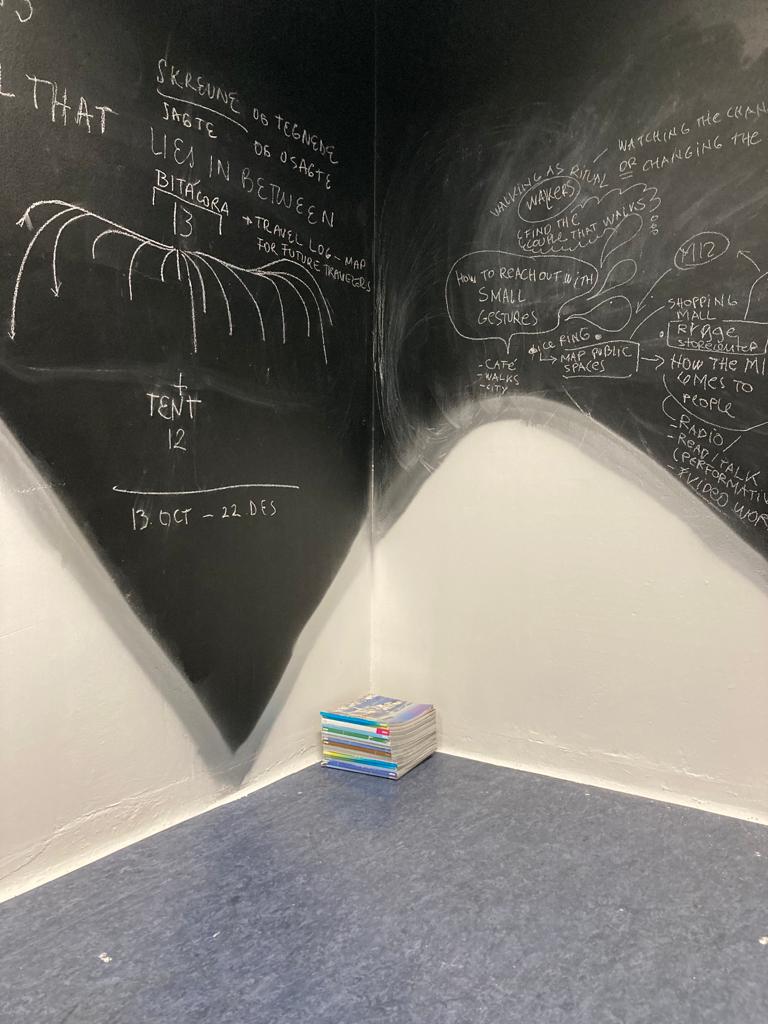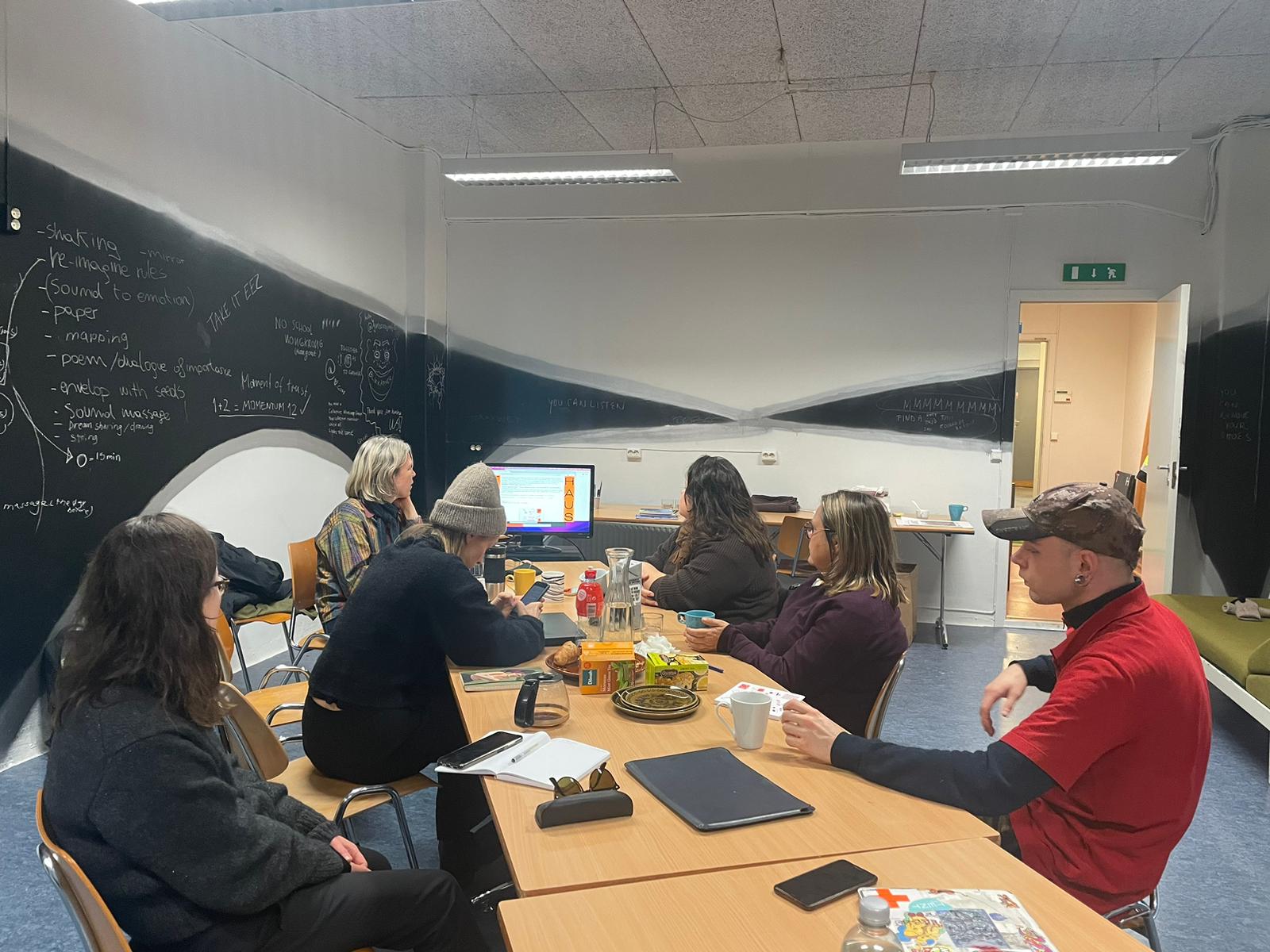February 8, 2023
The Latvian Centre for Contemporary Art Visits Oslo

In late January, Māra Žeikare, the manager of the project Artist is Present – Contemporary Art Residencies in Schools (No.EEZ/2022/2/27), went on a visit to Oslo together with project consultant Lība Bērziņa. This was the partners’ first in-person meeting and took place over a couple of days.
On the first of these, January 25, we visited the Tenthaus artist-run space in Oslo. It is located at the city center but is not currently hosting exhibitions, because the Tenthaus collective is busy working on curating the MOMENTUM Biennial of Contemporary Art (MOMENTUM announces Tenthaus as curator for its 2023 edition (biennialfoundation.org). The biennial, which is one of the most important contemporary art events in the Nordics, will take place June to October in Moss, an hour away from Oslo. During the meeting, the Artist is Present project was planned in detail, and Tenthaus introduced us to the publication Tenthaus toolkit. Artists in schools, available in English here: tenthaus_toolkit_english_-1.pdf). It will serve as our guidebook as we go about creating a similar publication over the course of the project, which will be based on the artists’ experience as they’re in-residence across Latvian schools. Our questions are the same that Tenthaus had as they embarked on their Oslo project: how can you integrate contemporary art in schools? Should we remain mere guests or participate in earnest? What is the best way a professional artist can provide value in schools? And how to create a successful and sustainable collaboration between the artist and the school?
We also visited Møllergata skole, the school which is closest to Tenthaus. We met both the teachers and vocational education staff who have been working with Tenthaus artists for years. Tenthaus have been active at the school for six years now, offering artist-created projects. We became acquainted with the system that’s operational in Oslo, the Aktivitetsskolen (AKS) or the program for after-school activities. As part of it, artists offer students to partake in collaborative workshops. There’s more English-language information about the program here: akspaengelsk.pdf (osloskolen.no).
Tenthaus artists and long-term teaching staff shared their experiences. The artists professed that, upon starting out, they had not known how to work with small children (6 to 10 years old), but were supported by the school staff, with both parties starting to learn from scratch without knowing what’s the right course. The practice of “learning by doing” formed the basis of the collaboration between the artists and the schools. The school acknowledged that artists give children the opportunity to study and practice abstract thinking and that the artists serve as an excellent role model for them.
There are many young teachers in Norwegian schools, and there is greater gender parity across the staff, because children need a role model of their own gender. Whenever an artists’ project draws to a close at the school, it is celebrated with a special event during which the project results are presented to the entire school. These are veritable festivities. Nevertheless, the artists working in Oslo’s schools set long-term goals for themselves. Together with the students, they decide to pursue a particular idea over the course of ten years. They return to the schools time and time again. There are artists who confine their creative practice only to schools.
We met the young people participating in the Norwegian program BLIKKÅPNER (blikkapner.no). They presented the creative project, Søk om å bli blikkåpner nå! ⟶ Galleri F 15, which they had carried out at a gallery in Moss. As part of the program, these very same young people will partake in the Momentum biennial organized by Tenthaus October to June.
On the second day of the visit, we met representatives from other art institutions working with children and young people in their galleries and institutions. Fotogalleriet is Oslo’s oldest photo gallery. Just like the LCCA, they are implementing the School Bag program in their own country. In Norway, this program is called Den Kulturelle Skolesekken (DKS and DKS LAB). It has been operational since 2001. Read more about the program in English here: This is The Cultural Schoolbag – Den kulturelle skolesekken | Den kulturelle skolesekken.
Antonio Cataldo, the director of the gallery, spoke about the challenges that they have faced in carrying out workshops in schools. Fotogalleriet is likewise a participant of the project Nøkkel til byen | English (trap.no), or The Keys to the City, which reaches out to young people who are aged 15 to 25 and live in Oslo or its vicinity but have never been introduced to culture or art. The participants of this program are invited to meet leading representatives of the cultural sector, and this close contact often results in an internship at the institution or even in work in the cultural sector. In collaboration with OsloMet students, the gallery has carried out guided tours at their exhibitions.
We also met Hilde Maisey, the head of the TRAP independent arts production company. Her work is both producing events as well as implementing cultural policy in Norway in order to promote diversity and inclusion through culture and art.
On the final day of the visit we partook at the Voicing the public seminar, Voicing the public – Kunstnernes Hus, which was organized by Ebba Moi, a member of TENTHAUS.
We found the participants’ stories useful, with Ann Liis-Kogan, an artist of Estonian descent, showing how she uses schools as a material for creating artwork. She includes students in her works. She made her first school artwork at Hersleb skole, thanks to the Tenthaus project taking place there. You can read more about it here: Performance at Hersleb | mysite (anneliiskogan.com). Meanwhile, Nicholas John Johnes, the head of the artists-in-residence project PRAKSISOSLO, introduced us to the experience his institution has had while organizing thematic artists’ residencies and offering paid jobs to young people aged 16 to 21 at PRAKSIS Teen Advisory Board (PTAB).
We – Māra and Lība of the LCCA – shared our experience in working with different audiences, such as students, seniors, and people with disabilities. We introduced the participants to the SURVIVAL KIT festival, the history of the Centre for Contemporary Art, as well as the exhibitions and events we are holding in public spaces in a country which doesn’t have a contemporary art museum of its own. A recording of the seminar will be on show at the (16) Kunstnernes Hus – YouTube channel.
